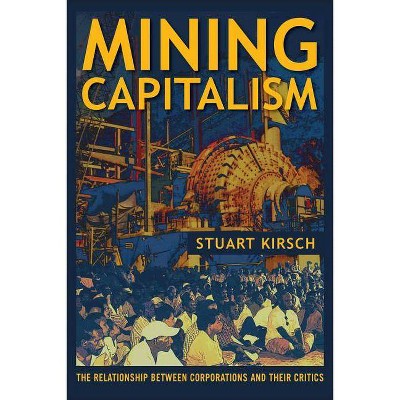Mining California - by Andrew C Isenberg (Paperback)

Similar Products
Products of same category from the store
AllProduct info
<p/><br></br><p><b> Book Synopsis </b></p></br></br><p><b>An environmental History of California during the Gold Rush</b></p><p> Between 1849 and 1874 almost $1 billion in gold was mined in California. With little available capital or labor, here's how: high-pressure water cannons washed hillsides into sluices that used mercury to trap gold but let the soil wash away; eventually more than three times the amount of earth moved to make way for the Panama Canal entered California's rivers, leaving behind twenty tons of mercury every mile--rivers overflowed their banks and valleys were flooded, the land poisoned. In the rush to wealth, the same chain of foreseeable consequences reduced California's forests and grasslands.</p><p>Not since William Cronon's<i> Nature's Metropolis</i> has a historian so skillfully applied John Muir's insight--"When we try to pick out anything by itself, we find it hitched to everything else in the universe"--to the telling of the history of the American West. Beautifully told, this is western environmental history at its finest.</p><p/><br></br><p><b> Review Quotes </b></p></br></br><br><p>"Superbly written. This excellent read, a model for future studies, deserves highest recommendations." --<i>D. Steeples, Choice; An Outstanding Academic Title</i></p><p>"As entertaining as it is insightful, Isenberg's book does justice to the dramatic ecological transformations California underwent in the half century after the Gold Rush. This is environmental history at its best." --<i>J. R. McNeill, author of Something New Under the Sun: An Environmental History of the Twentieth-Century World</i></p><p>"Andrew Isenberg's superb new book analyzes the ecological domino effect set in motion by the California Gold Rush, which touched off the cycles of environmental degradation the scale of which we can only now fully appreciate. Filled with lessons and warnings, <i>Mining California</i> is a timely and important book." --<i>William Deverell, Director, Huntington-USC Institute on California and the West</i></p><p>"The book offers a mother lode of descriptions of the sheer scale of projects undertaken, and a keen portrait of the ecological domino effect of new industries.... At a time when the state's residency has been forecast to grow by 13 million in the next 25 years, with its population probably stretching into its farthest regions, <i>Mining California</i> offers sobering reading on the consequences of unchecked expansion." --<i>San Francisco Chronicle</i></p><br><p/><br></br><p><b> About the Author </b></p></br></br><p><b>Andrew C. Isenberg </b>is a professor of history at Temple University. He is the author of <i>The Destruction of the Bison: An Environmental History, 1750-1920 </i>and is a former fellow of the Huntington Library and the Shelby Cullom Davis Center for Historical Studies.</p>
Price History
Price Archive shows prices from various stores, lets you see history and find the cheapest. There is no actual sale on the website. For all support, inquiry and suggestion messages communication@pricearchive.us




















